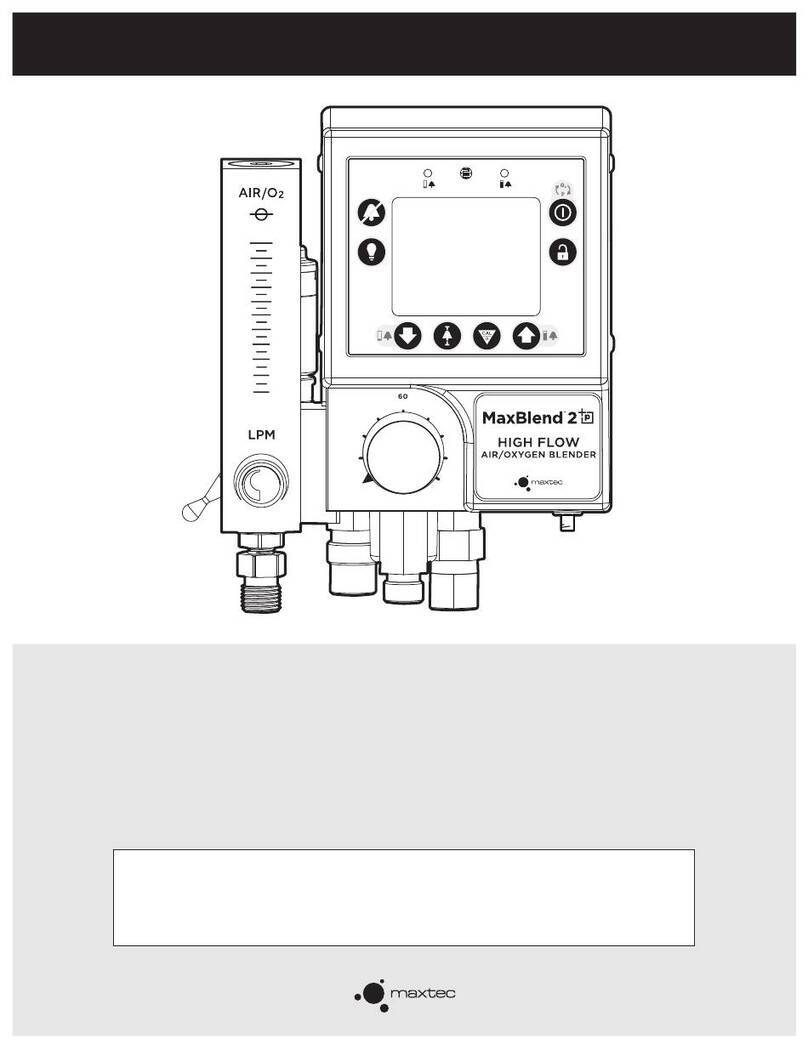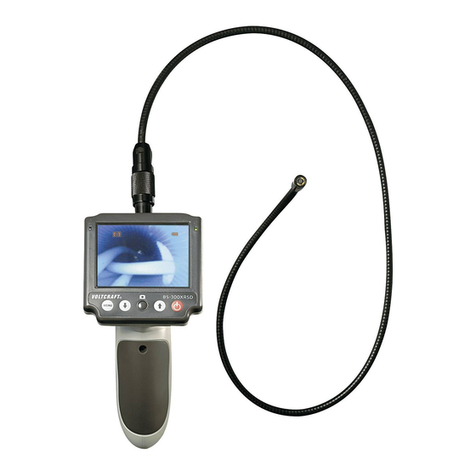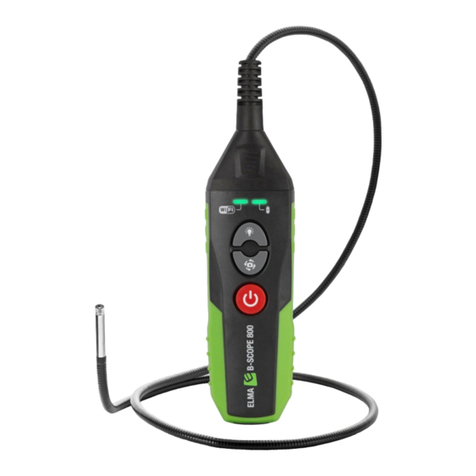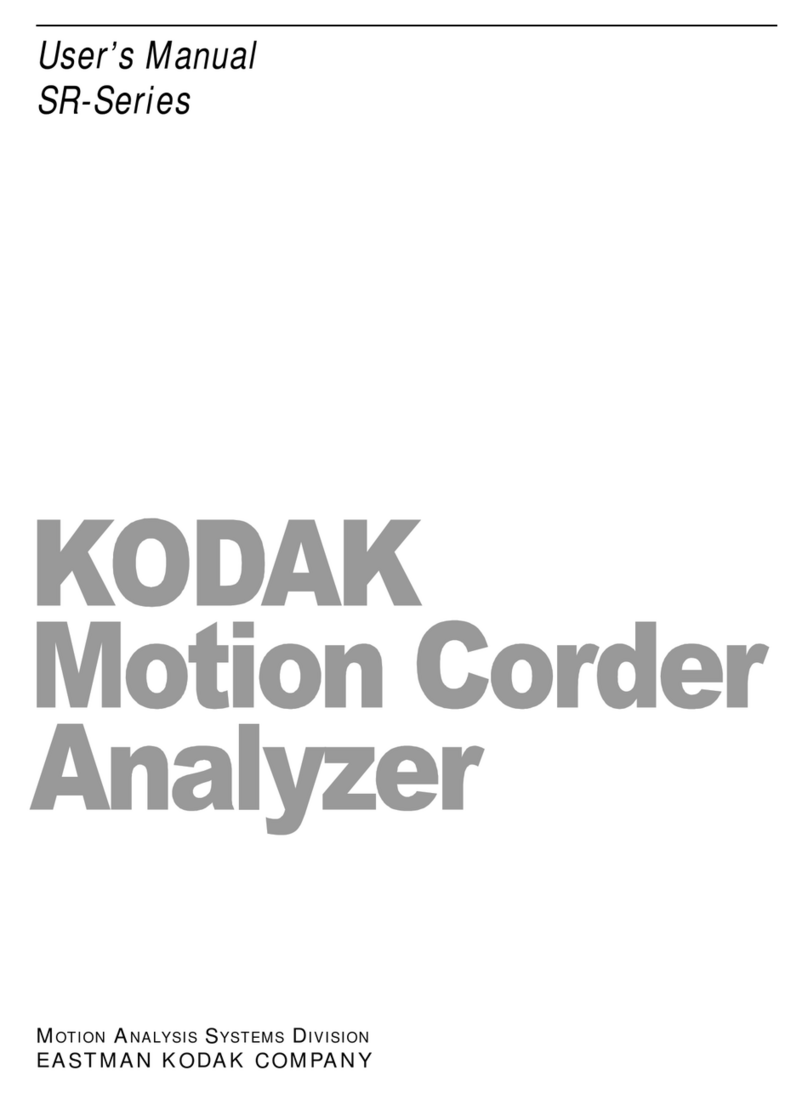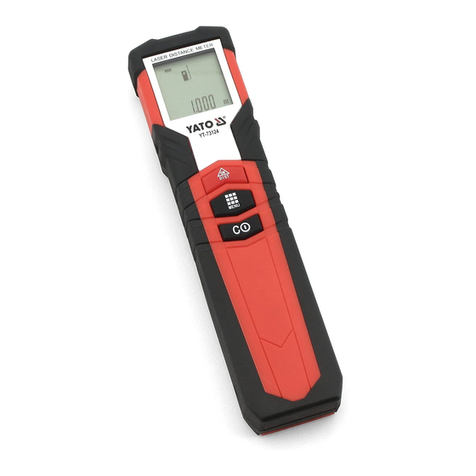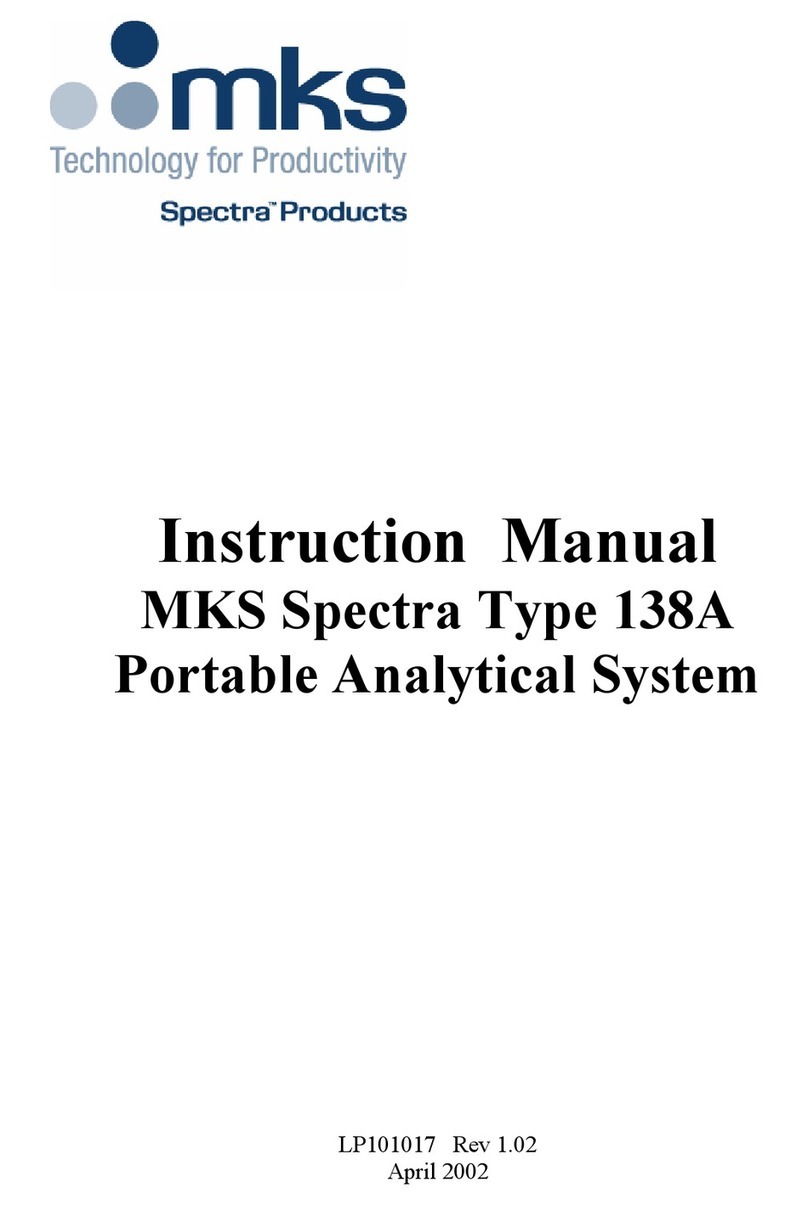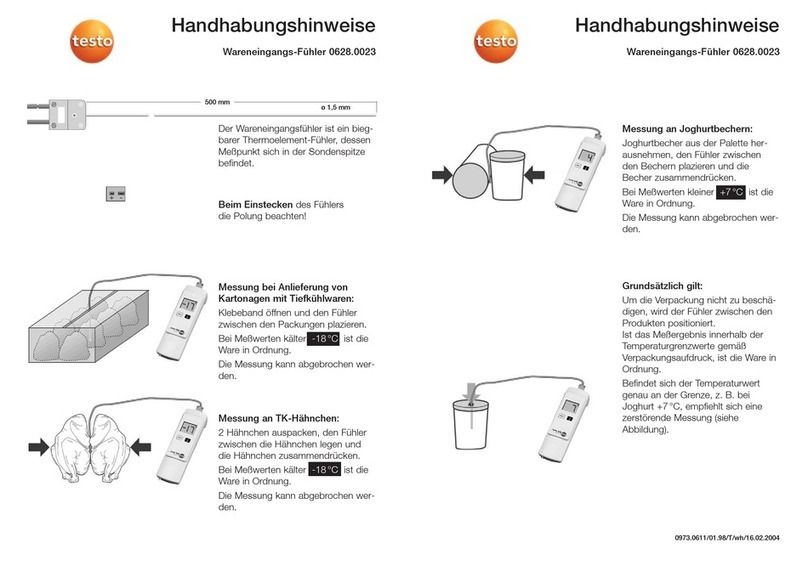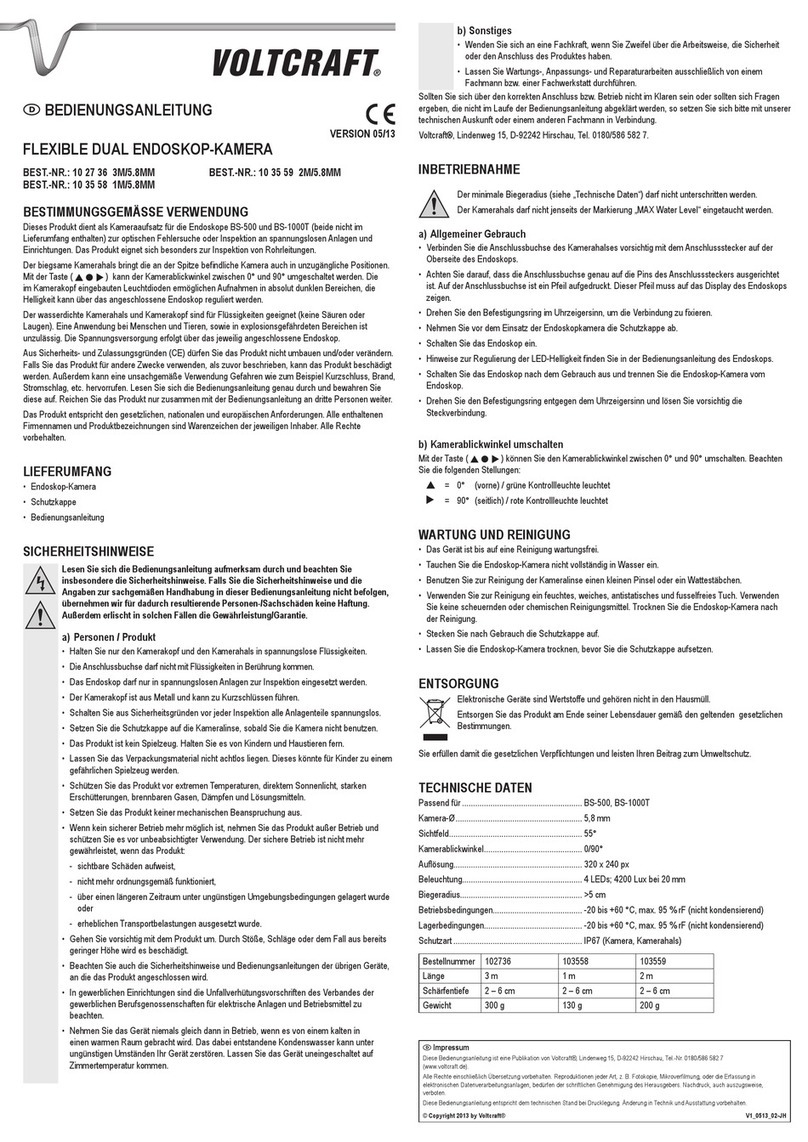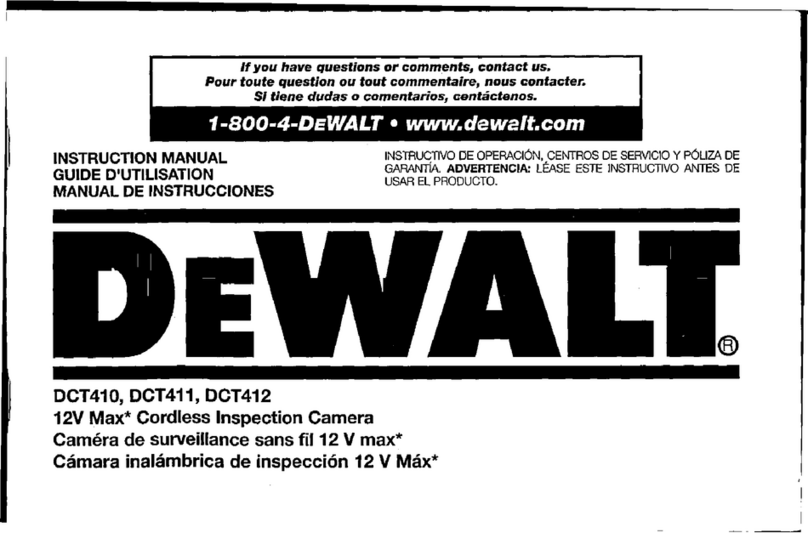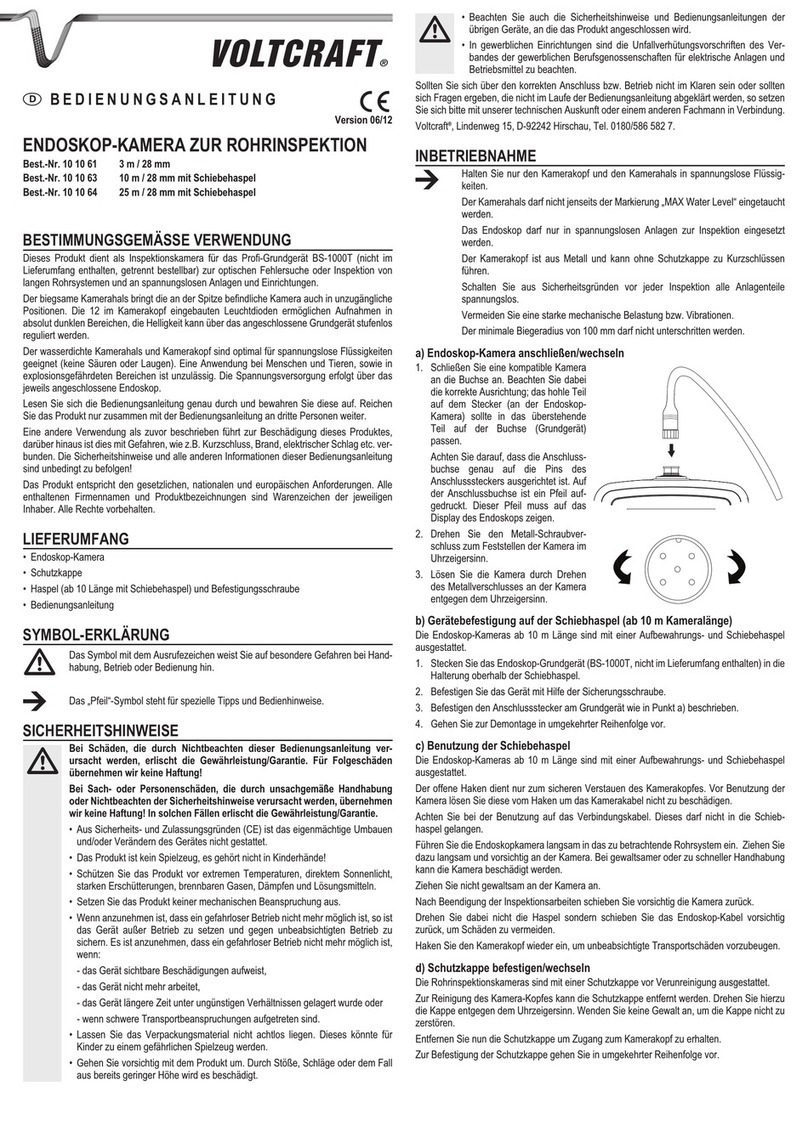Michell Instruments XZR500ST User manual

XZR500ST
Oxygen Analyzer
User’s Manual
97137 Issue 8
April 2017

Please fill out the form(s) below for each instrument that has been purchased.
Use this information when contacting Michell Instruments for service purposes.
Analyzer
Code
Serial Number
Invoice Date
Location of Instrument
Tag No
Analyzer
Code
Serial Number
Invoice Date
Location of Instrument
Tag No
Analyzer
Code
Serial Number
Invoice Date
Location of Instrument
Tag No

© 2017 Michell Instruments
This document is the property of Michell Instruments Ltd. and may not be copied or
otherwise reproduced, communicated in any way to third parties, nor stored in any Data
Processing System without the express written authorization of Michell Instruments Ltd.
XZR500
For Michell Instruments' contact information please go to
www.michell.com

XZR500 User’s Manual
iv 97137 Issue 8, April 2017
1 INTRODUCTION ................................................................................................1
1.1 System Description............................................................................................. 1
1.1.1 Measurement Principle .................................................................................. 1
1.1.2 Zirconia........................................................................................................ 1
1.1.3 The MSRS .................................................................................................... 2
1.1.4 XZR500 MSRS Assembly ............................................................................... 2
1.2 General Remarks ................................................................................................ 3
1.2.1 Sensor Head and Probe ................................................................................. 3
1.2.2 Control Unit .................................................................................................. 4
1.3 Specifications .................................................................................................... 6
1.3.1 General ........................................................................................................ 6
1.3.2 Optional Equipment....................................................................................... 8
1.3.3 Options ........................................................................................................ 8
2 INSTALLATION ..................................................................................................9
2.1 General Mounting Precautions ............................................................................ 9
2.2 Probe Mechanical Installation .......................................................................... 10
2.3 Control Unit Mechanical Installation ................................................................... 13
2.4 Wiring ............................................................................................................. 13
2.4.1 Cable Specifications..................................................................................... 13
2.4.2 Connection of the Cable (supplied) to the Control Unit................................... 13
2.4.2.1 Connection to the Mains ........................................................................ 14
2.4.2.2 Connection of the 0/4-20 Output............................................................ 14
2.4.2.3 Connection of the Alarms....................................................................... 14
2.4.3 Connection of the Cable to the Sensor Head ................................................. 14
3 OPERATION ....................................................................................................16
3.1 Outputs ........................................................................................................... 16
3.1.1 Analog Output ............................................................................................ 16
3.1.2 Alarms ....................................................................................................... 16
3.2 Start-Up........................................................................................................... 17
3.3 Display, Configuration and Adjustment ............................................................... 18
3.3.1 Visualization Menu [*] ................................................................................. 18
3.3.2 Set-up [ - ]................................................................................................. 21
3.3.2.1 Access code 0.12 - quick settings ........................................................... 22
3.3.2.2 Access code 0.20 - advanced settings..................................................... 24
3.3.3 Calibration [+] ............................................................................................ 29
3.3.3.1 Recommended Calibration Gas............................................................... 29
3.3.3.2 Regulating the Calibration Flow Rate ...................................................... 29
3.3.3.3 Calibration Procedure ............................................................................ 30
Contents
Safety ............................................................................................................................... vii
Electrical Safety ..........................................................................................................vii
Pressure Safety........................................................................................................... vii
Temperature...............................................................................................................vii
Toxic Materials ............................................................................................................ vii
Repair and Maintenance ..............................................................................................vii
Calibration.................................................................................................................. vii
Safety Conformity .......................................................................................................vii
Abbreviations.................................................................................................................... viii
Warnings .......................................................................................................................... viii

XZR500 User’s Manual
Michell Instruments v
Figures
Figure 1 Zirconia Principle ........................................................................................1
Figure 2 The MSRS and its K Thermocouple ..............................................................2
Figure 3 XR500 MSRS ..............................................................................................2
Figure 4 XZR500 Sensor Head & Probe .....................................................................3
Figure 5 Digital Display Panel ...................................................................................4
Figure 6 Main Display ..............................................................................................4
Figure 7 Control Unit .............................................................................................5
Figure 8 Probe Installation .....................................................................................10
Figure 9 Probe Head Orientation.............................................................................10
Figure 10 Flange Gasket Orientation.........................................................................11
Figure 11 Tubular Counter Flange Position ................................................................11
Figure 12 Inner Tube Orientation..............................................................................12
Figure 13 Hex Screw Locations.................................................................................14
Figure 14 Probe Wiring Diagram...............................................................................15
Figure 15 Calibration Flow-Chart...............................................................................33
Figure 16 XZR500 MSRS Mounting Diagram ..............................................................35
Figure 17 XZR500 Top View .....................................................................................36
Figure 18 XZR500 Side View ....................................................................................36
Figure 19 XZR500 Sensor Head & Probe General Dimensions .....................................50
Figure 20 Position of the Probe ................................................................................52
Figure 21 Installation of the Ejector/Heating System.................................................55
Figure 22 Enclosure for Controlling the Ejector Heating - General Wiring Diagram........56
Figure 23 XZR500 Flange and Back Flange (Optional) ................................................59
Figure 24 Insulators (Flange and Rear Sealing Screw)................................................59
Figure 25 Mounting Plate Dimensions .......................................................................60
Figure 26 Wiring of the Second 4-20 mA Output........................................................62
4 MAINTENANCE ................................................................................................34
4.1 Preventative Maintenance - Cleaning.................................................................. 34
4.2 Replacement Of The XZR500 MSRS .................................................................. 35
4.3 Replacement of the Furnace.............................................................................. 37
4.4 Replacement of the XZR500 Microcontroller Card................................................ 38
4.5 Replacement of Fuses....................................................................................... 38
4.6 Error Messages ............................................................................................... 39
5 SPARE PARTS ..................................................................................................41

XZR500 User’s Manual
vi 97137 Issue 8, April 2017
Appendices
Appendix A Technical Specifications..............................................................................43
Appendix B Configuration for the RS232 Port (Optional).................................................45
Appendix C Calculation of CO2 ....................................................................................48
Appendix D XZR500 Sensor Head and Probe General Dimensions ...................................50
Appendix E Back Flushing System (optional) .................................................................52
Appendix F Heated Flue Gas Ejection System (Optional)................................................55
Appendix G Mounting Options ......................................................................................59
G.1 Tubular Counter Flange and Insulators ..........................................59
G.2 Mounting Plate Dimensions ..........................................................60
Appendix H Second 4-20 mA Output.............................................................................62
Appendix I Automatic Calibration (Optional) ................................................................64
Appendix J Quality, Recycling & Warranty Information...................................................66
Appendix K Return Document & Decontamination Declaration........................................68
Tables
Table 1 Control Keys...............................................................................................5
Table 2 Maximum Temperature of Gases..................................................................7
Table 3 Cable Specifications .................................................................................. 13
Table 4 Connection of the Control Unit................................................................... 13
Table 5 Access codes 0.12 & 0.20 ......................................................................... 21
Table 6 Alarm Set-Point Examples ......................................................................... 23
Table 7 Fuse Replacement .................................................................................... 38

XZR500 User’s Manual
Michell Instruments vii
Safety
The manufacturer has designed this equipment to be safe when operated using the procedures
detailed in this manual. The user must not use this equipment for any other purpose than that
stated. Do not apply values greater than the maximum value stated.
This manual contains operating and safety instructions, which must be followed to ensure the safe
operation and to maintain the equipment in a safe condition. The safety instructions are either
warnings or cautions issued to protect the user and the equipment from injury or damage. Use
qualified personnel and good engineering practice for all procedures in this manual.
Electrical Safety
The instrument is designed to be completely safe when used with options and accessories supplied
by the manufacturer for use with the instrument. The input power supply voltage is 230 V AC or 115
V AC, 50/60 Hz. Refer to labels on instrument or calibration certificate.
Pressure Safety
DO NOT permit pressures greater than the safe working pressure to be applied to the instrument.
The specified safe working pressure, for all versions of this instrument, is 10 bar.
Temperature
Some parts of the analyzer can be at a very high temperature. DO NOT open the enclosure of the
probe during operation. Switch off the analyzer first and wait for at least 30 minutes.
Toxic Materials
The use of hazardous materials in the construction of this instrument has been minimized. During
normal operation it is not possible for the user to come into contact with any hazardous substance
which might be employed in the construction of the instrument. Care should, however, be exercised
during maintenance and the disposal of certain parts. Long exposure or breathing of the calibration
gases may be dangerous.
Repair and Maintenance
The instrument must be maintained either by the manufacturer or an accredited service agent. Refer
to www.michell.com for details of Michell Instruments’ worldwide offices contact information.
Calibration
The recommended calibration interval for the analyzer is 6 to 12 months depending on the application
in which the instrument is used.
Safety Conformity
This product carries the CE mark and meets the requirements of relevant European safety directives.

XZR500 User’s Manual
viii 97137 Issue 8, April 2017
Abbreviations
The following abbreviations are used in this manual:
AC alternating current
A Ampere
°C degrees Celsius
°F degrees Fahrenheit
Hz hertz
kg kilogram(s)
l/hour liters per hour
mA milli Ampere
mbars millibars
mm millimeter(s)
ppm parts per million
T Temperature
V Volt
W Watts
Warnings
The following general warnings listed below are applicable to this instrument. They are
repeated in the text in the appropriate locations.
Where this hazard warning symbol appears in the following
sections it is used to indicate areas where potentially
hazardous operations need to be carried out.
Where this symbol appears in the following sections it is used
to indicate areas of potential risk of electric shock.

XZR500 User’s Manual
Michell Instruments 1
INTRODUCTION
1 INTRODUCTION
XZR500 Series Oxygen Analyzers are designed to measure the oxygen content in
flue gases between 0.01% and 25% O2. They allow for the improvement of a boiler’s
performance, increasing equipment service life and surveying emissions, thereby
contributing to protecting the environment.
XZR500 Oxygen Analyzers can be used for several applications such as monitoring
combustion in power plants, incineration of industrial or domestic waste, incineration of
VOC, control of processes, etc.
Please read this manual carefully before starting up the analyzer. It is recommended
that you go through this manual again after the first use to enable optimal use of the
XZR500.
1.1 System Description
1.1.1 Measurement Principle
Michell Instruments’ aim is to provide the best measurement solutions for any
given industrial process or laboratory application. In the case of oxygen control and
measurement we have developed a highly advanced and miniaturized oxygen sensor,
the MSRS. This innovative sensor is at the heart of the XZR500 analyzer. A key strength
of the MSRS is that it has a built-in metal reference, this means it can operate for very
long periods without any requirement for re-calibration against a reference gas. As a
result the XZR500 has very low lifetime costs compared to other oxygen analyzers.
In addition to providing reliable and hassle free operation, the MSRS also delivers
excellent accuracy, class-leading linearity and, due to its small size, has a superior
response speed.
The operating principle of the MSRS is explained in detail as follows:
1.1.2 Zirconia
Zirconia is a solid electrolyte. At high temperatures
it conducts oxygen ions. An electrochemical voltage
develops between the two platinum-plated surfaces
of the zirconia in contact with two different gaseous
oxygen partial pressure (Pp) atmospheres. This voltage
follows the Nernst equation, expressed as:
E = RT ln Ppmeas.
4F Ppref.
Figure 1
Zirconia Principle
where R and F are constants
E = Nernst voltage (V)
T = temperature (°K)
Pp = oxygen partial pressures

XZR500 User’s Manual
297137 Issue 8, April 2017
INTRODUCTION
By setting the oxygen reference pressure and measuring voltage E and temperature T,
you can deduce the oxygen partial pressure you want to measure.
The volumetric concentration (expressed here in O2%vol.) is determined by the ratio
between the oxygen partial pressure (Ppmeas) and the atmospheric pressure (Ptot).
O2 %vol. = Ppmeas.
Ptot.
There is an optional ambient pressure sensor available for higher accuracy measurements.
1.1.3 The MSRS
Figure 2
The MSRS and its K Thermocouple
Unlike conventional “air reference” zirconia sensors the MSRS uses the equilibrium
status of an internal metal oxide to provide a reference. Therefore, this built-in metallic
reference sensor does not require any reference gas.
The MSRS is a very small cylinder, 3mm in diameter and 10mm long. A K thermocouple,
placed closed to the MSRS, measures its temperature with great precision. This design
leads to extremely high accuracy and very good resistance to thermal shocks. It also
increases the lifetime of the sensor.
1.1.4 XZR500 MSRS Assembly
The MSRS and its K thermocouple are placed inside an aluminum tube. The MSRS head
is attached to an assembly plate to allow for easier field servicing, see
Figure 3
below.
1. aluminum tube
2. O2reference wire with blue mark
3. O2reference wire with red mark
4. + thermocouple wire with green mark
5. - thermocouple wire with white mark
Figure 3
XR500 MSRS

XZR500 User’s Manual
Michell Instruments 3
INTRODUCTION
1.2 General Remarks
The analyzer is made up of a measurement probe and a Control Unit.
1.2.1 Sensor Head and Probe
The semi in-situ arrangement consists of the following elements:
• Sensor head, containing MSRS, sensor furnace, cable connection &
calibration port.
• Probe, comprising of an inner and outer tube to allow flow of sample from
flue to sensor.
The sample gas is returned to the flue practically unchanged in composition and
condition. This is due to the very small amount of sample required to diffuse into the
sensor furnace.
The gas flow is shown by the arrows in
Figure 4
below. In this example, the stack is
vertical and the flue gas flow direction is upwards.
Using the Pitot tube effect, gases enter through the hole near the tip of the outer tube
and circulate in the space between the outer tube (25, 2) and the inner tube (23).
During this process the gases contact the sensor through diffusion. They then flow into
the inner tube and to the flue via the bevelled edge.
The tubes are fitted so that the bevelled edge of the inner tube and the holes of the
outer tube face in opposite directions.
8
25
6
2
1
3
4
5
7
9
10
11
12
13
14
15
16
17
18
19
20
21
24
22 23
26
27
28
29
1 Sensor housing 11 XZR500 connector block 20 M6 Nut for fixing XZR500 probe plate
2 Outer tube 12 SS bulkhead union for cal.gas 21 M6 washer
3 Sealing head 13 2 sealing ferrules 22 M6 lock washer
4 XZR500 furnace 14 Nut for fixing bulkhead union 23 Inner tube
5 XZR500 MSRS 15 Stainless steel plug 24 VITON 8 x 2.5 O-ring
6 Gasket for flange (x2) 16 M8 lock washer 25 Outer tube
7 Gasket for wheel 17 Cable gland 26 Locking ring
8 Inter-tubes gasket 18 M8 spacer 27 Gasket for plug
9 Gasket for sealing screw 19 CHC 6x25 screw for fixing
XZR500 sensor attachmt plate
28 Big rear nut
10 TRF 3x16 screw for connector 29 Inter-tube gasket
Figure 4
XZR500 Sensor Head & Probe

XZR500 User’s Manual
497137 Issue 8, April 2017
INTRODUCTION
The XZR500 MSRS (5) assembly is placed perpendicular to the tubing system. The
XZR500 furnace (4) and the XZR500 MSRS (5) are placed inside a cast aluminum
enclosure which is made of two parts sealed with a 5mm diameter viton O-ring. It is
dust proof and waterproof and can be mounted outdoors. The cable gland (17) is made
of brass.
The whole set is mounted on the stack with a steel flange which is welded on the
XZR500 outer tube. Michell Instruments can provide an optional mounting kit containing
a counter flange with threaded rods (if needed please refer to Appendix G).
All the gaskets (6, 7, 8 and 9) placed on the tubes are made of carbon fiber.
A high temperature “gasket box” type device guarantees that the sealing head is airtight.
For dimensions of the measuring probe see Appendix D.
1.2.2 Control Unit
The Control Unit provides the Human Machine Interface (HMI) for the XZR500 analyzer.
It is housed in a metal case with a screen and three touch buttons to allow access to
menus. Inside there is a motherboard, a micro-controller and a display PCB. The output
signals and alarms are all accessed through the Control Unit.
Oxygen concentration is displayed on the screen as default and has one decimal
point as standard (a second decimal place can be requested as an option). Other
parameters available through the HMI are Furnace Temperature, Thermocouple Junction
Temperature, MSRS Voltage and Ambient Pressure (in mbars), if the optional pressure
sensor is ordered.
Configuration of alarms and output signals as well as calibration functions are all carried
out through the HMI of the Control Unit.
The digital display panel of the analyzer is shown in
Figure 5
.
-
*+
Figure 5
Digital Display Panel
O2Concentration
xx.xx%
Figure 6
Main Display
The instrument display is divided into two lines. The upper line is the descriptive line
and the bottom line displays the measured values or the function keys.

XZR500 User’s Manual
Michell Instruments 5
INTRODUCTION
The function keys are located below the display and are used to select operations
from the main menu level, to enter sub-menu levels and to select and enter parameter
variables within those menu levels. The function key panels are shown in
Figure 5
and
Table 1 describes the operation of the keys.
Key Function
[*] Enter or select key. Operation of this key from the front-page display causes
the selection menu to be displayed
[+] Value up key. Used to change the value. Access key to the Calibration menu
[-] Value down key. Used to change the value. Access key to the Set-up menu
Table 1 Control Keys
The analog output signal can be set in 0-20 mA or 4-20 mA. The scale is configurable
in the range of 0.01-25% O2.
The system provides three alarms on relay contact: a general failure alarm and two
threshold alarms with user-configurable set-point (action high and low) and hysteresis.
Figure 7
Control Unit
Cable
The cable connecting the control unit and the probe supplies the furnace with power
and it relays the MSRS temperature and voltage measurements to the Control Unit.
The standard cable length is 6 meters long (optional, up to 100 meters).

XZR500 User’s Manual
697137 Issue 8, April 2017
INTRODUCTION
1.3 Specifications
1.3.1 General
• Microcontroller: Motorola 68HC12
• Inlet converter: analog, 16 bits resolution, 0.0015% linearity error,
with filter and embedded calibrator
• Outlet converter: analog, 12 bits resolution, ±1 bit linearity error
• Display resolution: 0.1% O2(or 0.01 % on request and during
calibration)
• The 3-button keypad and digital interface allow:
Reading
Continuous display of the oxygen concentration to one decimal place (option
of second dp). Other parameters available through the HMI are Furnace
Temperature, Thermocouple Junction Temperature, MSRS Voltage and
Ambient Pressure (in mbars), if the optional pressure sensor is ordered.
Configuration
Configuring of the test gas value, activation direction of the alarms (high
or low) and hysteresis level, the fail safe value (output value sent by the
electronics in case of general failure), language (English, French or Italian),
the output analog signal, the associated scale and the factory settings. (For
other parameters see specific Appendix.)
• Output signal: 0-20 mA or 4-20 mA (user-selectable) galvanic isolation
(500 V), linear and programmable, output range can be selected between
0.01% and 25% O2
• Output impedance: > 1 k Ω
• Alarms: contacts are normally closed, dry and potential-free, the cutting
power is max. 10 W (up to 100 V or up to 0.5 A):
1. General failure alarm warning of furnace under temperature (20°C
below the instruction), thermocouple separation, problems with
RAM backup after a re-set or adjustment error
2. Threshold alarms, with programmable activation direction and
hysteresis
• Consumption: 110 VA
• Ingress and impact protection:
Electronic enclosure: IP52 and IK05
Probe: IP53 and IK05
• Storage temperature: between -10 and +70°C

XZR500 User’s Manual
Michell Instruments 7
INTRODUCTION
• Dimensions (mm):
Control Unit: 300 x 300 x 200 (w x h x d)
Sensor Head: 135 x 290 x 670 (w x h x d) (standard model)
Probe: 400, 600 or 900mm in length, with an outer diameter of 40mm
• Weight:
Control Unit: Approximately 7 kg
Sensor Head: Approximately 3 kg
Probe: Approximately 2-6 kg (dependant upon length & material of
construction)
• Power requirements: 230 or 115 V, -15%/+10%, 50/60 Hz
• Operating ambient temperature and moisture:
Temperature from 0 to 55°C
Relative moisture from 5% to 90% (non-condensing)
• Maximum temperature of the sample gases (Table 2):
Model Tubing Materials Gas Properties
XZR500 /SS 304 L stainless steel Tmax = 700°C
XZR500 /IL Inconel 600 Tmax = 1000°C
XZR500 /HR HR160 Tmax = 1000°C and corrosive gases
XZR500 /HC Hastelloy C2000 Tmax = 600°C and corrosive gases
XZR500 /CC Ceramic Tmax = 1300°C
XZR500 /HL Halar coating Tmax = 150°C
Table 2 Maximum Temperature of Gases
• Minimum speed of the sample gases: 0.5 m/s

XZR500 User’s Manual
897137 Issue 8, April 2017
INTRODUCTION
1.3.2 Optional Equipment
• Tubular counter-flange for fixing the probe to the stack (see Appendix G)
• Flange insulation (to prevent condensation forming)
• Extra length of cable (up to 100 meters)
• Calibration and verification kit
• Back flushing system: for cleaning the probe tubes when flue gases are
very dusty (see Appendix E)
• Flue gas ejector system with heating (see Appendix F)
• Rear insulation
1.3.3 Options
• Self-calibration
• 115 V / 60 Hz power supply
• RS232 interface (see Appendix B)
1. Transmits all data straight from/to a computer terminal, i.e: O2
concentration, furnace temperature, MSRS voltage, ambient
temperature and pressure.
2. Allows the setting of test gas value and starting the analyzer
calibration sequence.
3. Allows the changing of the alarm type, level and hysteresis, the
fail safe value, setting of the furnace temperature, the upper
scale adjustment, the signal output and scale, and starting the
self cleaning.

XZR500 User’s Manual
Michell Instruments 9
INSTALLATION
2 INSTALLATION
2.1 General Mounting Precautions
• Place the probe as close as possible to the process (without breaching
the flame front).
• Prevent ambient air from entering the stack upstream or at the probe
tapping point and interfering with the measurement. Make sure all the
gaskets are placed and tightened
(Figure 4)
, and tighten-up the SS plug
for calibration gas inlet (
Figure 4
(15)).
NOTE: The stainless steel plug - or any 1/8” sealing ferrule -
should be tightened up by hand and then tightened again using a
7/16” spanner, turning only 1/8th of a turn so as not to damage
the connection.
• Avoid placing the probe near cleaning devices or elements that create
vibrations and are liable to disturb the measurement.
• Voltage should be applied to the analyzer immediately after the instrument
is fixed on the stack so that the furnace can start heating. This will avoid
condensation at cold points where dirt could aggregate and clog up the
probe tubes. For the same reason, we recommend leaving the analyzer
powered up 24 hours a day, 365 days a year.
• The part of the tubing situated between the stack and the probe head
should be very well insulated - or even heated. If necessary, Michell
Instruments can manufacture a complete insulating cover for the outside
part of the probe (optional).
NOTE:
Ceramic probes require special handling.
Please read the following note carefully.
Ceramic Probes:
Special care must be taken when handling ceramic probes due to their fragile
nature. Inspect the probes thoroughly before inserting into stack. If they
have been damaged in transit, contact your Michell office or distributor
immediately and inform them of the situation. Take photographic evidence
of the damage to the probe, and of the packaging, on the day of delivery.
On insertion ensure that the probe does not impact with the side of the orifice.
Once installed, it is not recommended to remove the probe. If removal is
unavoidable due to maintenance, then allow the probe several hours to fully
cool to ambient temperature and extract slowly.
Consideration for placement of the probe is essential. Avoid the flame front,
violently turbulent sections of the duct/flue, proximity to dampers, or where
falling refractory could strike the probe. Excessive vibrations must be avoided
as ceramic is a brittle material.
Incorrect handling or placement of the probe will invalidate the warranty.

XZR500 User’s Manual
10 97137 Issue 8, April 2017
INSTALLATION
2.2 Probe Mechanical Installation
f. Inner probe tube
3 marks to indicate
the bevelled edge
Horizontal line Bevelled edge
e. Probe head
d. Gasket for flange
c. Outer tube b. Gasket for flange
a. Tubular
counter flange
Gas Inlet hole
}
}
}
5°
}
}
}
}
}
}
}
h. Locking ring
i. Rear nut
g. Gasket for locking ring
}
}
}
}
}
Gasket
Nut
}
}
j. Gasket
Figure 8
Probe Installation
The XZR500 is simple to set-up. Follow the instructions below:
1. Weld the tubular counter-flange (a) onto the stack. Follow the orientation
shown below to ensure that the probe head is set in a vertical position.
Slope the tubular counter-flange (a) slightly (maximum 5 degrees) so that
condensed water can go back to the process. The probe is fitted with a PN6
DN15 type flange (4 x 11mm diameter holes, placed on a 55mm diameter
circle). Pay special attention to the orientation and slope especially if the
counter flange/nozzle with flange is provided by the customer.
055mm
055mm
055mm
988
5°
Figure 9
Probe Head Orientation

XZR500 User’s Manual
Michell Instruments 11
INSTALLATION
2. Place the outer probe (c) with the flange gasket (b) according to the
drawing in
Figure 8
. The gas inlet hole should face the process flow.
Process ow
Gas inlet
hole
Process ow
Gas inlet
hole
Figure 10
Flange Gasket Orientation
3. Mount the probe head (e) with the flange gasket (d) on to the tubular
counter-flange (a). Secure the tubular counter flange, flange for outer
tube and flange of the probe head together by secure nuts onto four bolts
on the counter flange.
e. Probe head
d. Gasket for flange
b. Gasket for flange
a. Tubular
counter flange
Figure 11
Tubular Counter Flange Position

XZR500 User’s Manual
12 97137 Issue 8, April 2017
INSTALLATION
4. Place the gasket onto the inner tube (f) and insert into the probe head
(e) (see
Figure 8).
Make sure the bevelled edge of the inner tube tip
faces the opposite direction to the gas inlet hole on the outer tube (c) as
shown below. There are three marks on the other end of the inner tube
to indicate the orientation of the bevelled edge (see
Figure 12).
Process ow
f. Inner tube
c. Outer tube Bevelled edge
Gas inlet hole
Figure 12
Inner Tube Orientation
5. Place the locking ring (h) with the locking ring gasket (g), the rear nut
(i) and the inner tube gasket (j) accordingly on the rear of the probe
head. (See
Figure 8)
6. Put insulation between process and the probe head if necessary.
If the back flush option is chosen, then the orientation
must be reversed. This is because the inner tube becomes
the inlet so any dust build up will happen in the inner
tube. When the back flush is operated, it clears the tube
more efficiently.
Table of contents
Other Michell Instruments Analytical Instrument manuals
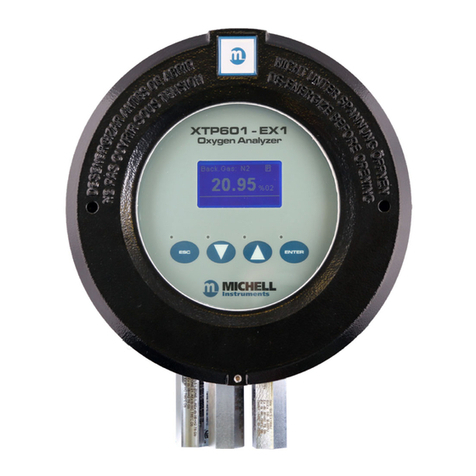
Michell Instruments
Michell Instruments XTP601 User manual
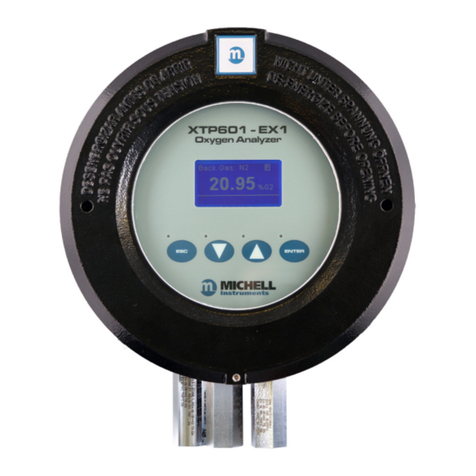
Michell Instruments
Michell Instruments XTP601 User manual
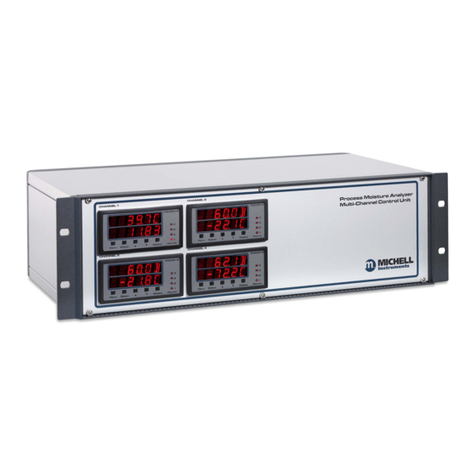
Michell Instruments
Michell Instruments Liquidew I.S. User manual
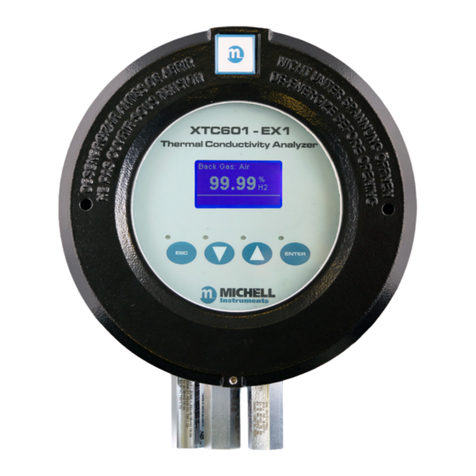
Michell Instruments
Michell Instruments XTC601 User manual
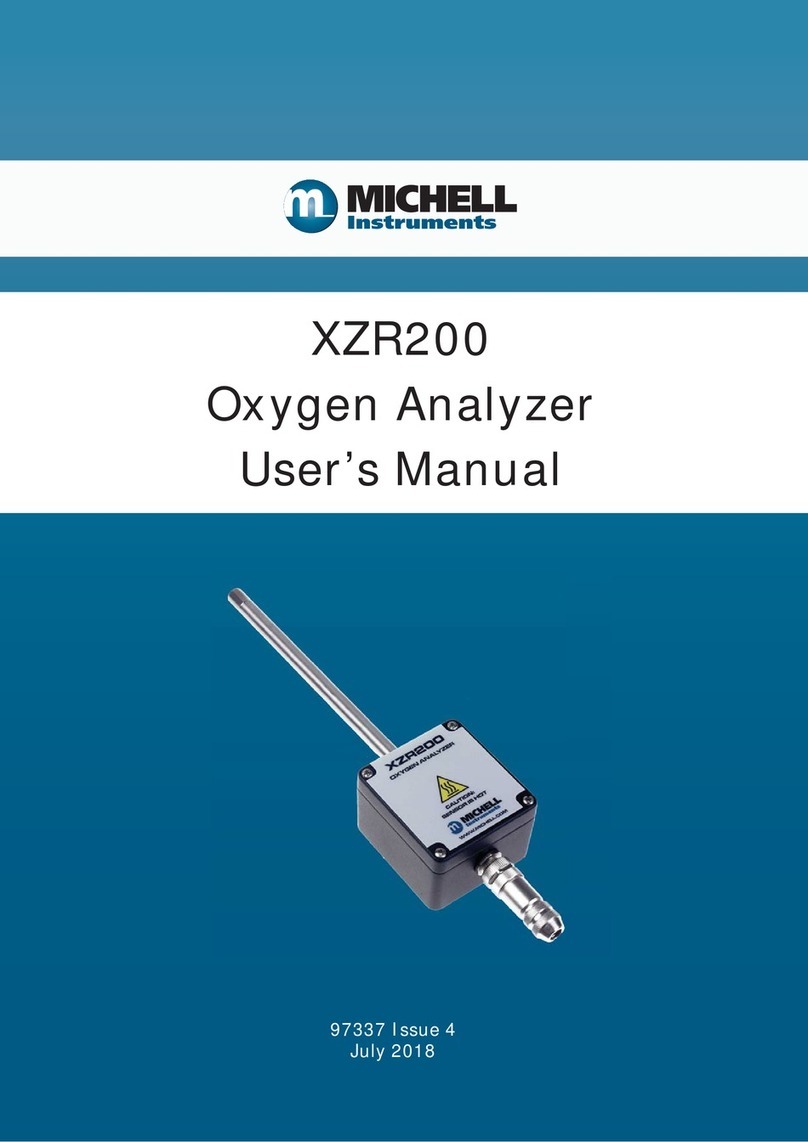
Michell Instruments
Michell Instruments XZR200 User manual
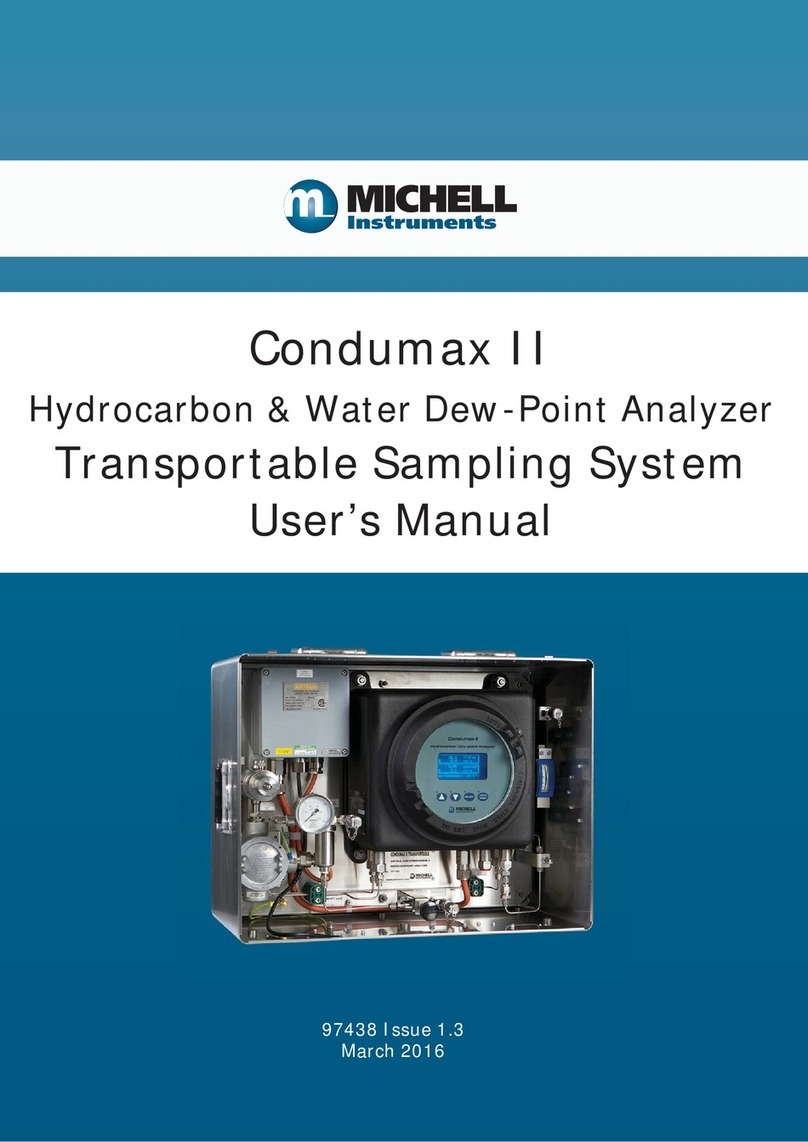
Michell Instruments
Michell Instruments Condumax II User manual



